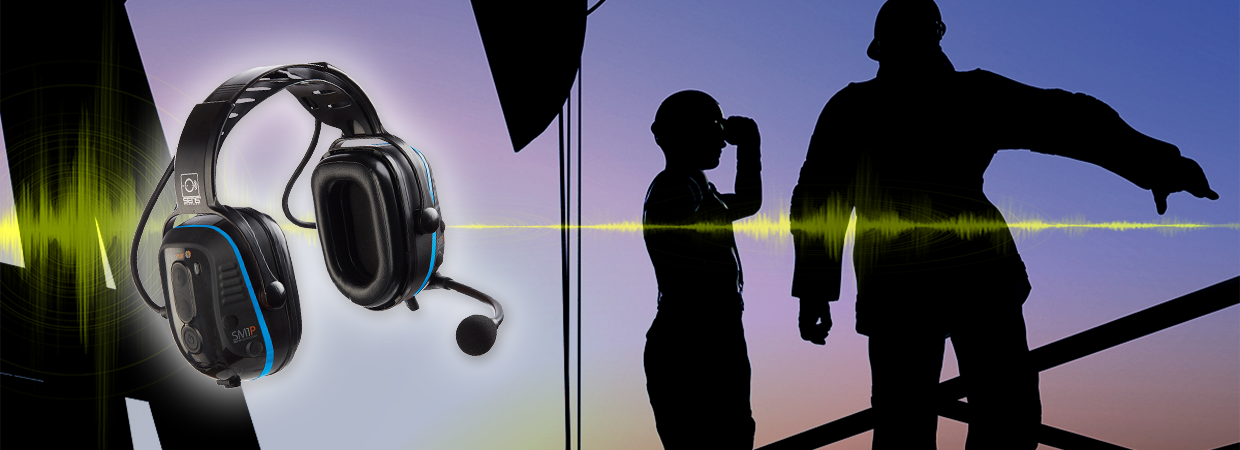- Home
- Blog
- Bluetooth® / Wireless Communication
- Is Bluetooth® Wireless Technology Ready for Prime Time in the Industrial Sector?

Is Bluetooth® Wireless Technology Ready for Prime Time in the Industrial Sector?
Over the last 12 months, we have seen a rapid increase in requests for Bluetooth® wireless technology solutions from our customers. In fact 1 in 3 lead requests are specifically for noise-canceling Bluetooth® wireless technology headsets to connect to a Bluetooth® wireless technology enabled communication device.
So is this an indication of an industry undergoing rapid change? My answer is a cautious “yes”.
Two-Way Radio Communication Headset
From an industry that for so long only had a requirement for a wired headset solution to connect to most heavy-duty communication devices, we now have a multitude of Bluetooth® wireless technology enabled devices that are being used in high noise industrial environments. This represents unique challenges for communication headset companies and those companies like Sensear who have invested in digital communication headset technologies are well placed to accept the challenge.
Two-Way Radio Headsets Going Bluetooth®
What is happening now in the industrial sector is the expansion of options as it relates to industrial communication devices. Two-way radios, which were the pre-dominate device for industrial communication, are undergoing a digital Bluetooth® transformation. Led by Motorola’s Mototrbo range, the Two-way radio product offering is expanding from analog options to a wider range of Digital Bluetooth® options.
This has ramifications for headset manufacturers, as they need to develop the right digital platforms to pair and connect with these two-way radios. This may sound easy, but there are challenging technical requirements to overcome that only a handful of headset companies can handle. Clearly, those headset companies who have invested heavily in digital technology platforms are better placed to handle the due diligence requirements that these digital devices pose.
Expanding Industrial Bluetooth® Device Options
There is now a growing range of options for industrial companies when it comes to Bluetooth® wireless technology enabled communication devices.
Heavy duty or “Rugged” smartphones are now starting to gain market share in the industrial sector. Companies like Sonim Technologies and Samsung are aggressively marketing their products through the major phones carriers and even Caterpillar is trying to stake out market share on the back of their industrial brand equity.
These smartphones have the same inherent challenges in high noise environments where users are required to wear hearing protection. Despite their embedded speech separation technologies, they still struggle to effectively deliver clear communication in industrial high noise environments where workers have to wear hearing protection.
These smartphone devices need to be able to connect wirelessly to the desired communication headset which should deliver not only clear communication but an ability to keep the worker safe by offering situational awareness and hearing protection all in one product.
Further, if these smartphones have embedded PTT protocols the challenge of maximizing their full functionality comes down to the technical capabilities of the headset company. Clearly, digital headsets are better placed to deliver this full functionality.
Consumer Devices on the Rise in the Industrial Sector
The iPhone and Android devices are exploding in the consumer market but they are also starting to make an impact in the industrial sector. Small companies operating in industrial sectors such as construction, engineering, agriculture, and related industries are experiencing the Bring Your Own Device (BYOD) phenomenon.
This means that consumer smartphones will gain more traction in the industrial sector especially as software companies develop industrial-like apps and functionality. An example of this is Zello, a Push to Talk app that turns your iPhone into a lightweight PTT Two-way radio.
Noise Cancelling Wireless Bluetooth® Headsets
These developments will lead to a growing demand for noise-canceling Bluetooth® headsets that have the capabilities to enable the full functionality of these consumer devices but are rugged enough to perform in hostile industrial environments.
Tablets represent the potential to not only streamline communication capabilities but to radically transform business processes in the industrial sector.
The ability to enter data and significantly enhance productivity while people are workers are on the job in these high noise environments is becoming a reality. Being able to connect to “process enhancement” tablets via Wireless Bluetooth® will become critical. In fact, we know of a number of leading industrial companies who are experimenting with Speech Recognition software to create a Speech Recognition + Speech Separation solution for hands-free wireless Bluetooth® communication to replace written process entry while on the job.
This possibility is not too far away and it will only be enabled by cutting-edge digital headsets that have the flexibility and capability to sync with these Bluetooth® wireless technology enabled devices.






